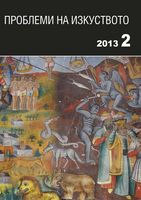Нематериално културно наследство: трансмисията като редукция на забравата. Още нещо за идентификацията
Intangible cultural heritage: Transmission as reduction of oblivion. One more thing about identification
Author(s): Mila SantovaSubject(s): Cultural history
Published by: Институт за изследване на изкуствата, Българска академия на науките
Summary/Abstract: Cultural reproduction in the area of intangible cultural heritage (ICH) would not, as a rule, take place where (especially if addressing those forms of culture, defined as „traditional”), knowledge and skills are not been transferred from man to man mostly through diachronic forms of getting the information across. This sets the special value of transmission with the ICH-a heritage, which exists, as a rule, in uncodified forms and is unthinkable without the living man’s active presence. An analyses of the provisions of a fundamental international document, the un-ESCO Convention for the Safeguarding of the Intangible Cultural Heritage 2003 shows that: the notion of transmission as training is an integral part of the preservation and in this respect with the safeguarding of the ICH; the document focuses on the transmission within communities and groups, that are specific subjects of the ICH , especially safe-guarded under the Convention; essential is the diachronic transmission of information to the major subjects of protection under the Convention. Theoretically, the problems related to the transmission refer to the major topic of memory. Transmission is defined as „transmitted memory”, knowledge of culture. The notion of collective memory is involved in this process, seen as inherent to the collective subject , as a collectively conditioned framework. But then, collective memory interpreted as cultural memory is applicable to the insight into traditional oral cultures. The transmission/memory issue brings to the fore the problem of oblivion. „Cultural oblivion” reduces the information, sorting out or rather filtering it. Images are being constructed in the process of reduction. These images underlie identification. From the thus outlined point of view, two quite different fieldwork examples are addressed, originating from different European cultures and relating to the transmission issue in different ways.
Journal: Проблеми на изкуството
- Issue Year: 2013
- Issue No: 2
- Page Range: 44-48
- Page Count: 5
- Language: Bulgarian
- Content File-PDF

